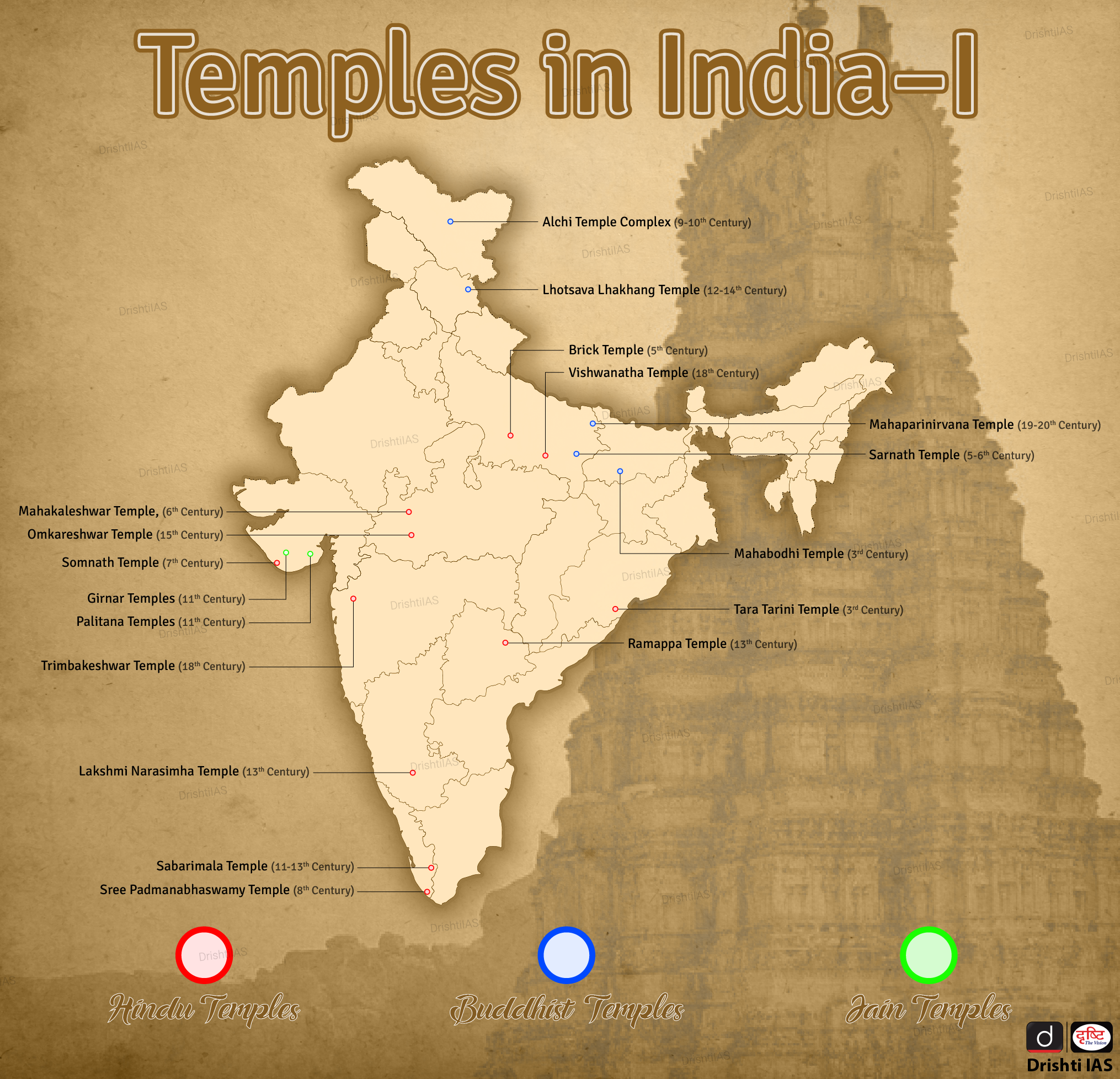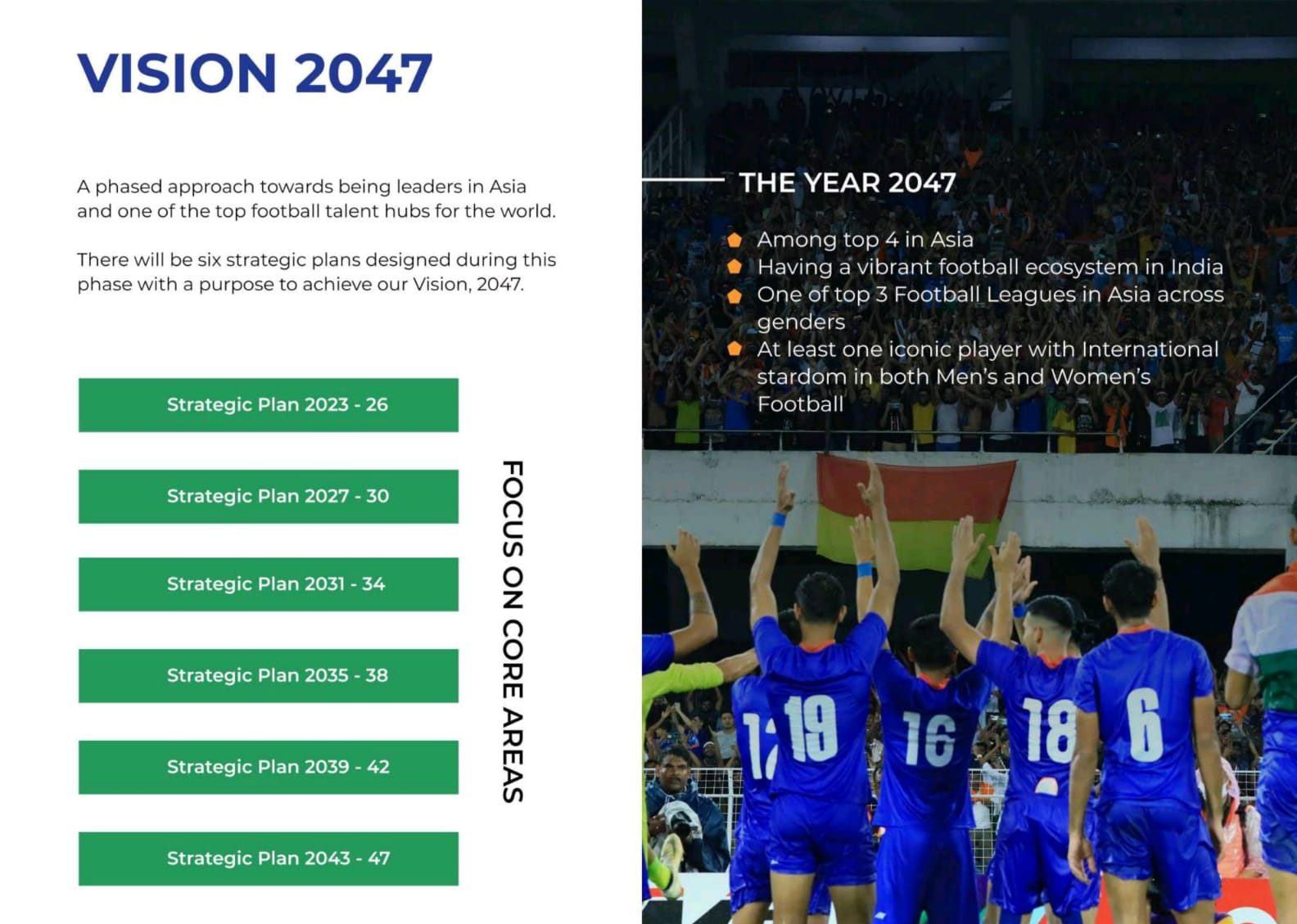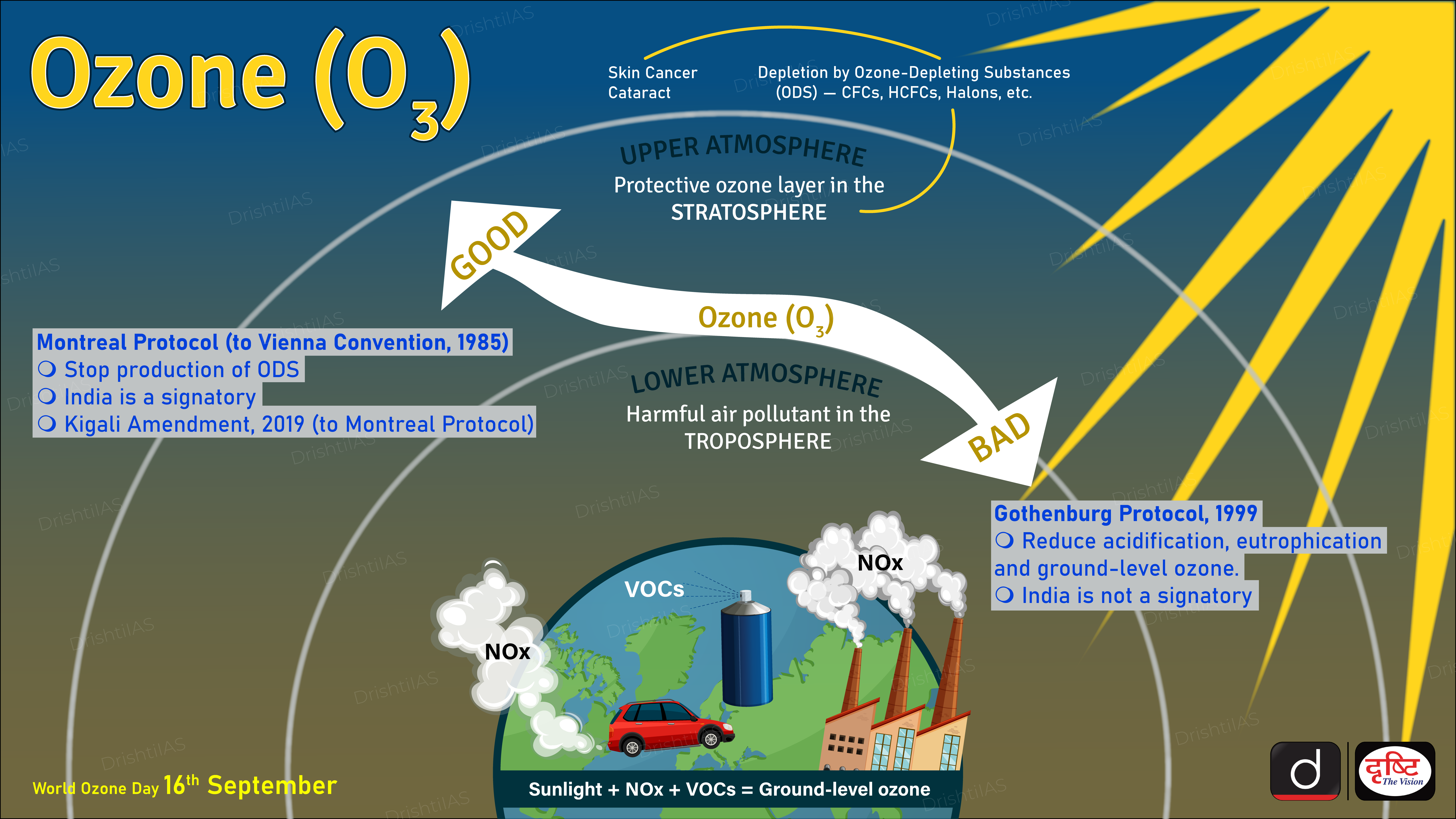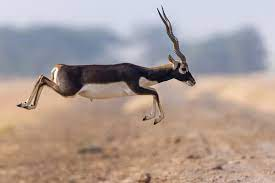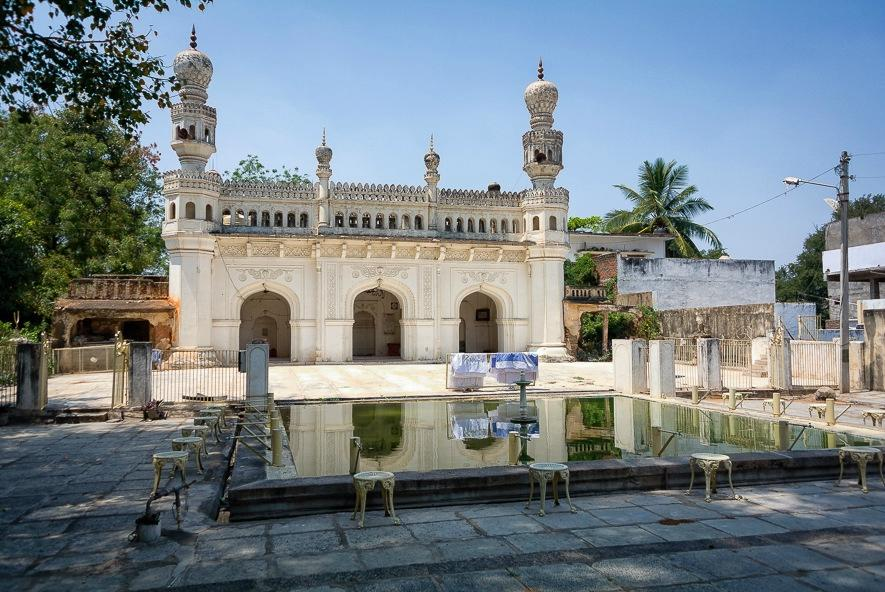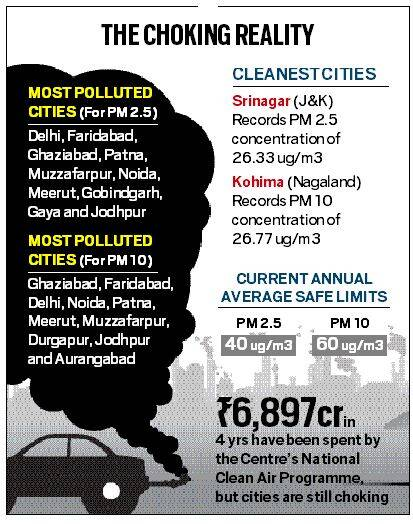Maps
Indian Polity
Centre Vs Union
Prelims: Eight Schedules, Indian Constitution, Federalism, President, Centralization and Decentralization of power.
Mains: Centre Vs Union, its constitutionality and issues with the term Central Government.
Why in News?
Since the Tamil Nadu government shunned the usage of the term ‘Central government’ in its official communications by replacing it with ‘Union government’, it has erupted the Union Vs Centre Debate.
- It has been seen as a major step towards regaining the consciousness of Indian Constitution.
What is the Constitutionality of the Term Union/Centre?
- There is no mention of the term ‘Central government’ in the Constitution of India because the Constituent Assembly did not use the term ‘Centre’ or ‘Central government’ in all of its 395 Articles in 22 Parts and eight Schedules in the original Constitution.
- There are only references of the ‘Union’ and the ‘States’ with the executive powers of the Union wielded by the President acting on the aid and advice of the Council of Ministers headed by the Prime Minister.
- Even though there is no reference to the ‘Central government’ in the Constitution, the General Clauses Act, 1897 gives a definition for it.
- The ‘Central government’ for all practical purposes is the President after the commencement of the Constitution.
What is the Intent of the Constituent Assembly?
- Article 1(1) of the Constitution of India says “India, that is Bharat, shall be a Union of States.”
- On 13th December, 1946, Jawaharlal Nehru introduced the aims and objectives of the Constituent Assembly by resolving that India shall be a Union of territories willing to join the “Independent Sovereign Republic”.
- The emphasis was on the consolidation and confluence of various provinces and territories to form a strong united country.
- While submitting the draft Constitution in 1948, Dr B R Ambedkar, chairman of the drafting committee, had said that the committee had used the word ‘Union’ because:
- (a) the Indian federation was not the result of an agreement by the units, and
- (b) the component units had no freedom to secede from the federation.
- The members of the Constituent Assembly were very cautious of not using the word ‘Centre’ or ‘Central government’ in the Constitution as they intended to keep away the tendency of centralizing of powers in one unit.
What is the Difference Between Union & Centre?
- According to constitution expert Subash Kashyap, from the point of the usage of the words, 'center' indicates a point in the middle of a circle, whereas 'Union' is the whole circle.
- In India, the relationship between the so-called 'Centre' and States, as per the Constitution, is actually a relationship between the whole and its parts.
- Both the Union and the States are created by the Constitution, both derive their respective authority from the Constitution.
- The one is not subordinate to the other in its own field and the authority of one is to coordinate with that of the other.
- The judiciary is designed in the Constitution to ensure that the Supreme Court, the tallest court in the country, has no superintendence over the High Court.
- Though the Supreme Court has appellate jurisdiction, not only over High Courts but also over other courts and tribunals, they are not declared to be subordinate to it.
- In fact, the High Courts have wider powers to issue prerogative writs despite having the power of superintendence over the district and subordinate courts.
- In very common parlance, Union gives a sense of Federal while centre gives more of a sense of unitary government.
- But practically both are the same in the Indian political system.
What are the Associated Issues with the Term Central Government?
- Discarded By Constituent Assembly: The word ‘Centre’ is not used in the Constitution; the makers of the Constitution specifically discarded it and instead used the word ‘Union’.
- Colonial Legacy: 'Centre' is a hangover from the colonial period because the bureaucracy in the Secretariat, New Delhi who are used to using the word ‘Central Laws,’ ‘Central legislature,’ etc, and so everyone else, including the media, started using the word.
- Conflict With Idea of Federalism: India is a federal government. The power to govern is divided between a government for the whole country, which is responsible for subjects of common national interest, and the states, which look after the detailed day-to-day governing of the state.
- According to Subash Kashyap, using the term ‘Centre’ or ‘central government’ would mean state governments are subservient to it.
Way Forward
- The federal nature of the Constitution is its basic feature and cannot be altered, thus, the stakeholders wielding power intend to protect the federal feature of our Constitution.
- A diverse and large country like India requires a proper balance between the pillars of federalism, i.e., autonomy of states, national integration, centralisation, decentralisation, nationalisation, and regionalisation.
- Extreme political centralisation or chaotic political decentralisation can both lead to the weakening of Indian federalism.
- The satisfactory and lasting solution of the vexed problem is to be found not in the statute-book but in the conscience of men in power.
UPSC Civil Services Examination, Previous Year Question (PYQ)
Prelims
Q. Which one of the following is not a feature of Indian federalism? (2017)
(a) There is an independent judiciary in India.
(b) Powers have been clearly divided between the Centre and the States.
(c) The federating units have been given unequal representation in the Rajya Sabha.
(d) It is the result of an agreement among the federating units.
Ans: (d)
Mains
Q. Though the federal principle is dominant in our constitution and that principle is one of its basic features, but it is equally true that federalism under the Indian Constitution leans in favour of a strong Center, a feature that militates against the concept of strong federalism. Discuss. (2014)


Governance
Assisted Reproductive Technology
For Prelims: Assisted Reproductive Technology, fundamental right, In Vitro fertilization
For Mains: Government Policies & Interventions, Issues Related to Women
Why in News?
The Kerala High Court has said that personal choice to build a family is a fundamental right and fixing an upper age limit for the same was a restriction which needs a relook.
What is the Issue?
- The court passed the directive while disposing of a batch of petitions challenging the age limit of 50 years for women and 55 years for men prescribed under the Assisted Reproductive Technology (ART) (Regulation) Act, 2021, for undergoing the assisted reproductive technology.
- According to the petitioners, prescription of the upper age limit under Section 21 (G) of the ART Act is irrational, arbitrary, unreasonable and violative of their right to reproduction, which is acknowledged as a fundamental right.
- They sought to declare it as unconstitutional.
- The High Court has directed the National Assisted Reproductive Technology and Surrogacy Board to alert the Union government about the need for having a relook at the upper age limit prescribed for using assisted reproductive technology.
- Apart from this, the petitioners have also challenged the provision wherein medical practitioners have been brought within the purview of the Indian Penal Code (IPC) and offences have been made cognizable.
- These provisions are having a chilling effect on IVF practitioners across the country dissuading them from performing their professional duties due to the fear of prosecution.
What are the Provisions of the ART (Regulation) Act, 2021?
- Legal Provisions:
- The ART (Regulation) Act 2021 provides a system for the implementation of the law on surrogacy by setting up of the National Assisted Reproductive Technology and Surrogacy Board.
- The Act aims at the regulation and supervision of ART clinics and assisted reproductive technology banks, prevention of misuse, and safe and ethical practice of ART services.
- Definition of ART Services:
- The Act defines ART to include all techniques that seek to obtain a pregnancy by handling the sperm or the oocyte (immature egg cell) outside the human body and transferring the gamete or the embryo into the reproductive system of a woman. These include gamete donation (of sperm or egg), in vitro fertilization (IVF), and gestational surrogacy.
- ART services will be provided through: (i) ART clinics, which offer ART related treatments and procedures, and (ii) ART banks, which collect, screen and store gametes.
- Eligibility Criteria for Donors:
- A bank may obtain semen from males between 21 and 55 years of age, and eggs from females between 23 and 35 years of age. The woman may donate eggs only once in her life and not more than seven eggs may be retrieved from her. A bank must not supply gamete of a single donor to more than one commissioning party (i.e., couples or single women seeking services).
- Conditions for Offering Services:
- ART procedures must be conducted only with the written consent of the commissioning parties and the donor. The commissioning party will be required to provide insurance coverage in favour of the egg donor (for any loss, damage, or death).
- Rights of a child born through ART:
- A child born through ART will be deemed to be a biological child of the commissioning couple and will be entitled to the rights and privileges available to a natural child of the commissioning couple. A donor will not have any parental rights over the child.
- Shortcomings:
- Exclusion of Unmarried and Heterosexual Couples:
- The Act excludes unmarried men, divorced men, widowed men, unmarried yet cohabiting heterosexual couples, trans persons and homosexual couples (whether married or cohabiting) from availing ART services.
- This exclusion is relevant as the Surrogacy Act also excludes above said persons from taking recourse to surrogacy as a method of reproduction.
- Reduces the Reproductive Choices:
- The Act is also limited to those commissioning couples who are infertile - those who have been unable to conceive after one year of unprotected coitus. Thus, it is limited in its application and significantly reduces the reproductive choices of those excluded.
- Unregulated Prices:
- The prices of the services are not regulated, this can certainly be remedied with simple directives.
- Exclusion of Unmarried and Heterosexual Couples:
Way Forward
- Mandatory counselling should be provided by independent organizations, not by clinic ethics committees.
- All ART bodies should be bound by the directions of central and state governments in the national interest, friendly relations with foreign states, public order, decency and morality.
- All the constitutional, medico-legal, ethical and regulatory concerns raised must be thoroughly reviewed before affecting millions.


Governance
Indian Football’s Vision 2047
Prelims: All India Football Federation, FIFA.
Mains: Indian football’s Vision 2047.
Why in News?
The All India Football Federation unveiled its strategic roadmap with ‘Vision 2047’, hoping that in the country’s centenary year of independence, India will emerge as a new powerhouse of Asian football.
- Developed in conjunction with all stakeholders within Indian Football, the roadmap has also sought and incorporated inputs from the Asian Football Confederation and FIFA (Fédération internationale de Football Association).
- AIFF has broken down ‘Vision 2047’ into six four-year strategic plans. The first of these will look to cover the period till 2026.
What is Indian Football’s Vision 2047?
- National Football Philosophy:
- The national football philosophy of India would be based on collecting data from scouting, creating a technical curriculum, focusing on coach and player development and hoping it would translate into a talent pool for the national team.
- To create a national playing philosophy, the AIFF will develop the Coach Education Program to improve the quality of football at all levels of the ecosystem.
- The AIFF has also targeted creating 50,000 active coaches — almost 4,500 with a minimum AIFF C License — across the country.
- The focus on collecting data and creating a scouting system will be in charge of and will do so by 2026. The overall approach to finding a footballing philosophy though remains the same.
- The national football philosophy of India would be based on collecting data from scouting, creating a technical curriculum, focusing on coach and player development and hoping it would translate into a talent pool for the national team.
- Vibrant Footballing Ecosystem.
- The roadmap envisions India to be among the top four footballing nations in Asia, host one of the top leagues in Asia, and create a vibrant footballing ecosystem.
- Village Grassroots Programmes:
- AIFF aims to implement village grassroots programmes to reach 35 million children across 100 villages throughout India and also aim to register 1 million registered players and provide football education to 25 million children through Football for Schools.
- They noted that there is a huge gender disparity in participation at grassroots level.
- Enhancement of Women Participation:
- A four-level league table pyramid will be created for women’s football by 2026 with the top of the pyramid to be occupied by the Indian Women’s League (featuring 10 teams), followed by the 2nd Division (8 teams). AIFF has also targeted a minimum of 20 states to implement the new women’s youth structures by 2027.
- The women’s football ecosystem has been weak in the country and needed specific solutions to help increase participation and competency, also mentioning the need to improve the minimum salary.
- A four-level league table pyramid will be created for women’s football by 2026 with the top of the pyramid to be occupied by the Indian Women’s League (featuring 10 teams), followed by the 2nd Division (8 teams). AIFF has also targeted a minimum of 20 states to implement the new women’s youth structures by 2027.
- Infrastructure:
- The AIFF will improve infrastructure by putting in place policy interventions that will incentivise government authorities, football clubs, corporates, and private investors to invest in infrastructure.
What is the Scenario of Football in India?
- About:
- Football in India is currently at a developing stage. Despite being the second most populous country in the world, football is not as popular in India as cricket.
- Challenges:
- One of the main challenges facing football in India is the lack of investment and infrastructure. Many stadiums and training facilities are in poor condition, and there is a shortage of properly trained coaches and trainers. This makes it difficult for players to develop their skills and for teams to compete at a high level.
- Potential:
- The Indian national team has made some strides and has improved its FIFA ranking. The ISL and I-League have also seen an increase in popularity and attendances, and there have been some successful Indian players in overseas leagues.
- Overall, football in India still has a long way to go, but there are some positive developments and there is potential for growth in the future.
- The recent efforts of AIFF to improve grassroots level football, training and development of coaches, referees, infrastructure and promoting the game to newer areas and schools, will help in bringing more people to the game and increase its popularity and success.
What is AIFF?
- The AIFF is the organization that manages the game of association football in India.
- It administers the running of the India national football team and also controls the I-League, India's premier domestic club competition, in addition to various other competitions and teams.
- The AIFF was founded in 1937, and gained FIFA affiliation in the year 1948, after India's independence in 1947.
- Currently, it has an office in Dwarka, New Delhi. India was one of the founding members of the Asian Football Confederation in 1954.

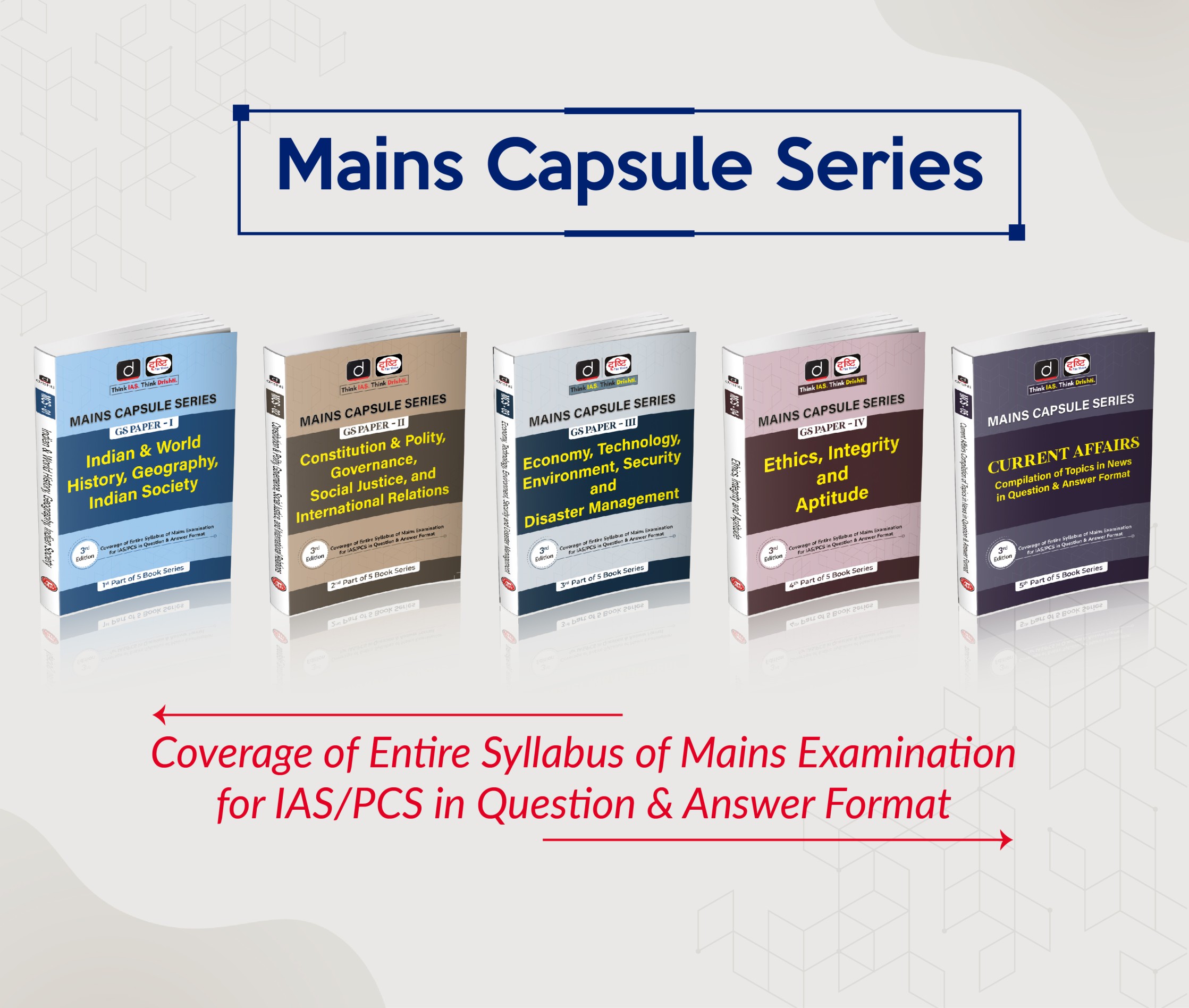
Indian Polity
Stalemate Between Telangana and AP
Prelims: Andhra Pradesh Reorganization Act 2014, Supreme Court, Central Government's Role.
Mains: Stalemate between Telangana and AP, Inter- State Dispute
Why in News?
Recently, Andhra Pradesh has approached before the Supreme Court seeking “Just, Reasonable and Equitable Apportionment” of assets and liabilities under the Andhra Pradesh Reorganisation Act 2014.
What is the Background?
- On 2nd June, 2014 the northwestern part of Andhra Pradesh was separated and 29th state Telangana was created.
- The States Reorganisation Act (1956) merged the Telugu-speaking areas of Hyderabad state with the Andhra state to create the enlarged Andhra Pradesh state.
- The Andhra Pradesh Reorganisation Act (2014) bifurcated Andhra Pradesh (AP) into two separate states, namely, the Andhra Pradesh (residuary) and the Telangana.
- Now more than eight years after the bifurcation of the erstwhile united Andhra Pradesh, division of assets and liabilities between the two States remain elusive as the States make their own interpretation of the provisions under the Andhra Pradesh Reorganisation Act 2014.
What are the Issues?
- 12 Institutions not Mentioned in the Act:
- The issue involves 245 institutions with a total fixed asset value of ₹1.42 lakh crore.
- There are 91 institutions under Schedule IX and 142 institutions under Schedule X of the Act.
- The division of another 12 institutions not mentioned in the Act has also become contentious between the States.
- Delays in Division of Assets and Liabilities:
- AP laments that the Telangana government had selectively accepted the recommendations given by the expert committee headed by Sheela Bhide, leaving others which was resulting in delays in division of assets and liabilities.
- The committee has made recommendations with respect to the division of 89 out of the 91 Schedule IX institutions.
- Andhra Pradesh argues that recommendations were accepted hastily to expedite the process of division and finalized the division of these institutions.
- AP laments that the Telangana government had selectively accepted the recommendations given by the expert committee headed by Sheela Bhide, leaving others which was resulting in delays in division of assets and liabilities.
- Contention over Division of Assets:
- The expert committee’s recommendations on the division of assets that are not a part of the headquarter assets attracted criticism from the Telangana government, saying it is against the spirit of the Reorganisation Act.
What is the Role of the Centre?
- The Ministry of Home Affairs (MHA) has given clarity about the headquarter assets way back in 2017.
- MHA states that in the case of one single comprehensive State undertaking (which includes the headquarters and the operational units in one facility) which is exclusively located in, or its operations are confined in one local area, it shall be apportioned on the basis of location as per sub-section (1) of Section 53 of the Reorganisation Act.
- The Act empowers the Union Government to intervene as and when needed.
Note
- The SC in its original jurisdiction decides disputes between states.
- As per Article 131 of the Constitution reads, the SC have original jurisdiction in any dispute between the Government of India and one or more States or between the Government of India and any State or between two or more states.
- Under Article 263 of the Constitution, the Inter-state council is expected to inquire and advise on disputes, discuss subjects common to all states and make recommendations for better policy coordination.
What Can be Done to Resolve Inter-State Disputes?
- The responsibilities assigned to the Inter State Council by the Constitution (in terms of resolving inter-state disputes) need to be fulfilled in reality and not just in papers.
- Similarly, Zonal councils need to be revived to discuss the matters of common concern to states in each zone—matters relating to social and economic planning, border disputes, inter-state transport, etc.
- India is the epitome of unity in diversity. However, to strengthen this unity furthermore, both the Centre and state governments need to imbibe the ethos of cooperative federalism.
UPSC Civil Services Examination Previous Year Question (PYQ)
Q. The power of the Supreme Court of India to decide disputes between the Centre and the States falls under its (2014)
(a) advisory jurisdiction
(b) appellate jurisdiction
(c) original jurisdiction
(d) writ jurisdiction
Ans: (c)


Important Facts For Prelims
Nickel Alloy Coatings
Why in News?
As per an autonomous Research and Development Centre of the Department of Science and Technology (DST), a new method of deposition of Nickel alloy coatings on engineering-grade materials can replace environmentally toxic chrome plating.
What is Chrome Plating?
- About:
- Chrome plating is a process by which a thin layer of chromium is deposited on a metal surface using an electroplating process.
- The process of depositing a layer of any desired metal on another material by means of electricity is called electroplating.
- Chrome plating is a process by which a thin layer of chromium is deposited on a metal surface using an electroplating process.
- Properties:
- The chromium layer is highly reflective and provides a hard, durable surface that is resistant to corrosion.
- Significance:
- Chrome plating is often used on automotive parts, as well as on household fixtures such as door handles, and in many industrial applications.
- Disadvantage:
- The process of chrome plating involves the use of hexavalent chromium, which is a known human carcinogen.
- It can cause respiratory problems, skin irritation, and an increased risk of lung cancer when inhaled. It can also cause skin irritation, and allergic reactions and can be toxic when ingested.
- The process of chrome plating involves the use of hexavalent chromium, which is a known human carcinogen.
What is Nickel Alloy Coating?
- About:
- Nickel coating provides a unique combination of corrosion and wear resistance. It can add brightness, luster and appeal.
- It also provides excellent adhesion properties for subsequent coating layers, which is why nickel is often used as an ‘undercoat’ for other coatings, such as chromium.
- Applications:
- Aerospace: Nickel alloy coatings are used on aircraft and aerospace components to provide protection against corrosion and wear, as well as to improve the durability and lifespan of the parts.
- Automotive: Nickel alloy coatings are used on automotive parts to protect against corrosion and wear, as well as to improve the durability and lifespan of the parts.
- Food Processing: Used on food processing equipment to protect against corrosion and to provide a non-stick surface.


Important Facts For Prelims
Recovery of Ozone Layer
Why in News?
According to a new U.N. report, earth’s protective ozone layer is slowly but noticeably healing at a pace that would fully mend the hole over Antarctica in about 43 years.
What are the Findings of the Report?
- While this is an achievement, the scientists warned of the detrimental effects of geoengineering technologies such as stratospheric aerosol injection on the ozone layer.
- Aerosol sprays, like other commonly used substances such as dry-cleaning solvents, refrigerants and fumigants, contain Ozone-Depleting Substances (ODS) including chlorofluorocarbons (CFCs), hydrochlorofluorocarbons (HCFCs), halons, methyl bromide, carbon tetrachloride, and methyl chloroform.
- For the first time, the Scientific Assessment Panel examined the potential effects on ozone of the intentional addition of aerosols into the stratosphere, known as Stratospheric Aerosol Injection (SAI).
- SAI can increase sunlight reflection, thereby lowering the amount of heat that enters the troposphere. But this method “could also affect stratospheric temperatures, circulation and ozone production and destruction rates and transport".
What are the Key Facts about Ozone?
- Ozone is a special form of oxygen with the chemical formula O3. The oxygen we breathe and that is so vital to life on earth is O2.
- About 90% of ozone occurs naturally in the Earth's upper atmosphere (Stratosphere) between 10 and 40 km above Earth's surface, where it forms a protective layer that shields us from the sun's harmful ultraviolet rays.
- This “good” ozone is gradually being destroyed by man-made chemicals referred to as ODS, including CFCs, HCFCs, halons, methyl bromide, carbon tetrachloride, and methyl chloroform.
- When chlorine and bromine atoms come into contact with ozone in the stratosphere, they destroy ozone molecules.
- One chlorine atom can destroy over 100,000 ozone molecules before it is removed from the stratosphere.
- Ozone can be destroyed more quickly than it is naturally created.
- Ozone layer depletion leads to an uptick in the incidence of skin cancer and cataracts in humans.
What are the Related Steps taken?
- Vienna Convention:
- The 1985 Vienna Convention for the Protection of the Ozone Layer provided a framework for international cooperation on ozone protection.
- Montreal Protocol (under Vienna Convention):
- Adopted in 1987, the Montreal Protocol is a worldwide agreement to stop the production of substances causing ozone-depletion.
- Kigali Amendment to the Protocol: Parties to the Montreal Protocol agreed to phase down production and consumption of Hydrofluorocarbons, commonly known as HFCs.
UPSC Civil Services Examination, Previous Year Question (PYQ)
Q1. Which one of the following is associated with the issue of control and phasing out of the use of ozone depleting substances? (2015)
(a) Bretton Woods Conference
(b) Montreal Protocol
(c) Kyoto Protocol
(d) Nagoya Protocol
Ans: (b)
Exp:
- The Bretton Woods Conference, officially known as the United Nations Monetary and Financial Conference was a gathering of delegates from 44 nations that met in 1944 in Bretton Woods (USA) to agree upon a series of new rules for the post-World War-II international monetary system.
- The two major accomplishments of the conference were the creation of the International Monetary Fund (IMF) and the International Bank for Reconstruction and Development (IBRD).
- The Montreal Protocol is an international environmental agreement to protect the earth’s ozone layer by eliminating the use of ozone depleting substances. Adopted on 15th September 1987, the protocol is to date the only UN treaty that ever has been ratified by every country on Earth – all 197 UN member states.
- The Kyoto Protocol is an international agreement linked to the UNFCCC, which commits its Parties by setting internationally binding GHGs (Greenhouse Gases) emission reduction targets.
- The Kyoto Protocol was adopted in Kyoto, Japan on 11th December 1997 and entered into force on 16th February 2005.
- The detailed rules for the implementation of the protocol were adopted as CoP7 in Marrakesh, Morocco in 2001 and referred as the Marrakesh Accord.
- India has ratified the second commitment period (2008‑2012) of the Kyoto protocol, that commits countries to contain emissions of greenhouse gases, reaffirming its stand on climate action.
- The Nagoya Protocol on Access to Genetic Resources and the Fair and Equitable Sharing of Benefits Arising from their Utilization provides a transparent legal framework for the effective implementation of one of the three objectives of the Convention on Biological Diversity: the fair and equitable sharing of benefits arising out of the utilization of genetic resources, to promote sustainable use of biological diversity. India signed the protocol in 2011.
- Therefore, option B is the correct answer.
Q2. Consider the following statements: (2012)
Chlorofluorocarbons, known as ozone-depleting substances, are used
- in the production of plastic foams
- in the production of tubeless tyres
- in cleaning certain electronic components
- as pressurizing agents in aerosol cans
Which of the statements given above is/are correct?
(a) 1, 2 and 3 only
(b) 4 only
(c) 1, 3 and 4 only
(d) 1, 2, 3 and 4
Ans: (c)
- Chlorofluorocarbons (CFCs) are nontoxic, nonflammable chemicals containing atoms of Carbon, Chlorine and Fluorine. They are widely used as refrigerants, propellants (in aerosol applications), and solvents.
- The Montreal Protocol is an international agreement made in 1987 to stop the production and import of ozone depleting substances such as chlorofluorocarbons and reduce their concentration in the atmosphere to help protect the earth’s ozone layer.
- India completely phased out production and consumption of CFCs, carbon tetrachloride and halons.
- Use of CFCs
- Refrigeration
- Making of plastic foams; hence, statement 1 is correct.
- As pressurising agent in aerosol cans; hence, statement 4 is correct.
- As cleaning agent for electronic products. hence, statement 3 is correct.
- However tubeless tyre industry does not use CFCs. Hence, statement 2 is not correct. Therefore, option (c) is the correct answer.


Important Facts For Prelims
Increase in Blackbuck Population
Why in News?
According to a new study from the Indian Institute of Science (IISc), blackbucks in India have adapted well to natural and human-induced challenges to their survival.
- In spite of immense losses in grassland habitats across India, the data showed an increasing trend in blackbuck population numbers as compared to the recent past.
What are Blackbucks?
- About:
- The Blackbuck (Antilope cervicapra), or the Indian Antelope, is a species of antelope native to India and Nepal.
- It is widespread in Rajasthan, Gujarat, Madhya Pradesh, Tamil Nadu, Odisha, and other areas throughout peninsular India.
- It is considered as the epitome of grassland.
- The blackbuck is a diurnal antelope (active mainly during the day).
- The Blackbuck (Antilope cervicapra), or the Indian Antelope, is a species of antelope native to India and Nepal.
- Recognition:
- It has been declared as the State Animal of Punjab, Haryana, and Andhra Pradesh.
- Cultural Importance:
- It is a symbol of purity for Hinduism as its skin and horns are regarded as sacred objects. For Buddhism, it is a symbol of good luck.
- Protection Status:
- Wildlife Protection Act 1972: Schedule I
- IUCN Status: Least Concern
- CITES: Appendix III
- Threat:
- Habitat Fragmentation, Deforestation, Natural Calamities, Illegal Hunting.
- Related Protected Areas:
- Velavadar Blackbuck Sanctuary - Gujarat
- Point Calimere Wildlife Sanctuary - Tamil Nadu
- In 2017, the Uttar Pradesh State Government approved the plan of setting up the Blackbuck Conservation Reserve in the trans-Yamuna belt near Prayagraj. It would be the first conservation reserve dedicated to the blackbuck.
- Tal Chhapar Sanctuary- Rajasthan
UPSC Civil Services Examination, Previous Year Questions (PYQs)
Q1. Which one of the following protected areas is well-known for the conservation of a sub-species of the Indian swamp deer (Barasingha) that thrives well on hard ground and is exclusively graminivorous? (2020)
(a) Kanha National Park
(b) Manas National Park
(c) Mudumalai Wildlife Sanctuary
(d) Tal Chhapar Wildlife Sanctuary
Ans: (a)
Exp:
- Hard ground swamp deer or Barasingha (Rucervus duvaucelii), the state animal of Madhya Pradesh, is seeing a revival in the Kanha National Park and Tiger Reserve (KNPTR).
- Swamp Deer was close to extinction in the Kanha National Park. However, with the conservation efforts, the population currently numbers around 800.
- The deer is endemic to the Kanha National Park and Tiger Reserve on the Maikal Range of Satpura Hills. Measures like captive breeding and habitat improvement were used.
- Therefore, option (a) is the correct answer.


Rapid Fire
Rapid Fire Current Affairs
DAC Approves VSHORAD Missile System
The Defence Acquisition Council (headed by Defence Minister) provided Acceptance of Necessity (AoN) for the procurement of Very Short Range Air Defence System (VSHORAD) (Infrared (IR) Homing) missile system being designed and developed by DRDO.
DAC also approved the procurement of the (a) HELINA Anti-Tank Guided Missiles, launchers and support equipment for the indigenous Advanced Light Helicopters (ALH) (for Army) and (b) Brahmos Launcher & Fire Control System and Next Generation Missile Vessels (for Navy).
The acquisitions have been made under ‘Buy (Indian-IDDM)’ category - the highest priority procurement under DAP-2020.
These advancements in the defence system can be attributed to the growing tensions with China at LAC.
Read More - VSHORAD, Helina: Anti-Tank Guided Missile, Advanced Light Helicopter (ALH)
Union Carbide Corporation and Bhopal Gas Tragedy
The Union Carbide Corporation (UCC) has said that it is not willing to pay any more amount than what was settled with the Central Government in 1989 following the Bhopal Gas Tragedy as the Centre has sought additional funds of over ₹7,400 crore from UCC.
On December 3, 1989, the highly dangerous and toxic gas, methyl isocyanate (MIC) (Chemical formula- CH3NCO or C2H3NO), leaked from the Union Carbide India Limited (UCIL) in Bhopal. The tragedy resulted in the death of 5,295 people and injuries to almost 5,68,292 persons besides substantial loss of livestock and property.
Read More - Bhopal Gas Tragedy
Restoration Project for Paigah Tombs
The US Govt will extend financial support of USD 250,000 (by the US Ambassadors Fund for Cultural Preservation) towards the conservation and restoration of 6 of the Paigah tombs, built in 18th-19th centuries, in Hyderabad. The Aga Khan Trust for Culture will implement the project.
The Paigah tombs (or Maqbara Shams al-Umara) is a necropolis belonging to the nobility of the Paigah family who served the Nizam of Hyderabad (Asaf Jahi dynasty). The tombs, made of lime, mortar and marble, are one of the finest examples of Indo-Islamic architecture (blend of Asaf Jahi and Rajputana styles).
The Paigahs were among the most influential and powerful families of Hyderabad in the 18th century. Wealthier than most rulers, they were responsible to look after the security and defence of the region. They claimed to be the descendants of Hazrath Omar bin Al-Khattab, Islam’s second caliph.
Read More - Islamic Architecture
Pollution and PM 2.5
As per a CPCB air quality data analysis by the National Clean Air Programme, in 2022, Delhi was the top polluted city with an annual avg. PM 2.5 concentration of 99.7 ug/m3. This is much above the CPCB standard of 40 ug/m3 of air.
The analysis has found that most cities in the top 10 most polluted list of 2022 are from the Indo-Gangetic Plain; for PM 2.5 (Delhi, Faridabad, Ghaziabad, Patna, Muzzafarpur, Noida, Meerut, Gobindgarh, Gaya and Jodhpur) and for PM 10 (Ghaziabad, Faridabad, Delhi, Noida, Patna, Meerut, Muzzafarpur, Durgapur, Jodhpur and Aurangabad).
The position of the cleanest city in India in 2022 was jointly held by Srinagar and Kohima.
India’s current annual average safe limits for PM 2.5 and PM 10 are 40 ug/m3 and 60 ug/m3. The NCAP initially set a target of reducing key air pollutants PM10 and PM2.5 by 20-30% by 2024 and by 40% by 2026 (base year - 2017).
Read More - Air Pollution (PM 2.5 and PM 10)



